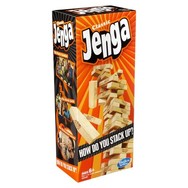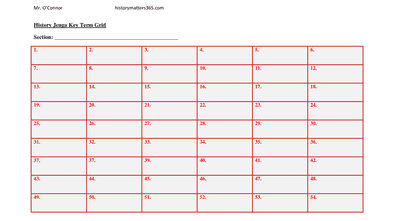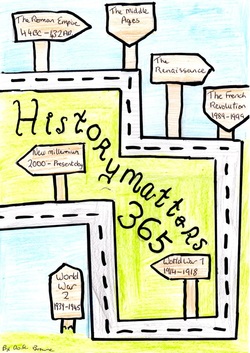 Classic Jenga
Classic Jenga History Jenga is an educational twist on the classic game. Revise for a test or simply check for understanding having completed a section of coursework.
There are 54 blocks in a Classic Jenga stack. Label each one with a numbered sticker. Prepare a numbered table of key historical terms, questions or tasks. Break your class into teams and let the fun begin!
What do you need?
54 Classic Jenga blocks (Available from any good toy store)
Sticker labels
Stacking sleeve (Optional)
Table of key terms (See History Matters template below), questions or tasks
How to play
2 or more teams
Set up the tower. Place three blocks per layer, alternating direction by layer.
With only one hand, the first player from the first team removes a block from anywhere below the highest completed layer. The player can touch the blocks to find a loose one. He/she takes note of the number on the block.
The block is placed on top of the tower. Wait 10 seconds. Use this time to refer to the key term table. If the tower falls, the player loses. If the tower stands, the player uses the key term to generate a piece of factual information, answers the question or completes the task.
Example:
Key Term > Martin Luther
Fact > Martin Luther nailed his 95 Theses against the church door of Wittenberg Castle
Succeed and the next player from the next opposing team must take a turn. Fail and the next player on the same team must take a turn.
If a fact is disputed by an opposing team, the referee (teacher) will make a judgement.
The winner is the last team to stack a block without causing the tower to crash!
Few Tips
There are 54 blocks in a Classic Jenga stack. Label each one with a numbered sticker. Prepare a numbered table of key historical terms, questions or tasks. Break your class into teams and let the fun begin!
What do you need?
54 Classic Jenga blocks (Available from any good toy store)
Sticker labels
Stacking sleeve (Optional)
Table of key terms (See History Matters template below), questions or tasks
How to play
2 or more teams
Set up the tower. Place three blocks per layer, alternating direction by layer.
With only one hand, the first player from the first team removes a block from anywhere below the highest completed layer. The player can touch the blocks to find a loose one. He/she takes note of the number on the block.
The block is placed on top of the tower. Wait 10 seconds. Use this time to refer to the key term table. If the tower falls, the player loses. If the tower stands, the player uses the key term to generate a piece of factual information, answers the question or completes the task.
Example:
Key Term > Martin Luther
Fact > Martin Luther nailed his 95 Theses against the church door of Wittenberg Castle
Succeed and the next player from the next opposing team must take a turn. Fail and the next player on the same team must take a turn.
If a fact is disputed by an opposing team, the referee (teacher) will make a judgement.
The winner is the last team to stack a block without causing the tower to crash!
Few Tips
- In the case of a large class group set up more than one Classic Jenga stack.
- Vary difficulty level by allowing or not allowing a player to ask for help. If allowing, I advise the use of lifelines. Each team has three lifelines where a player can refer to his/her teammates.
- Add spice to affairs by offering a prize to the winning team!
| |||


